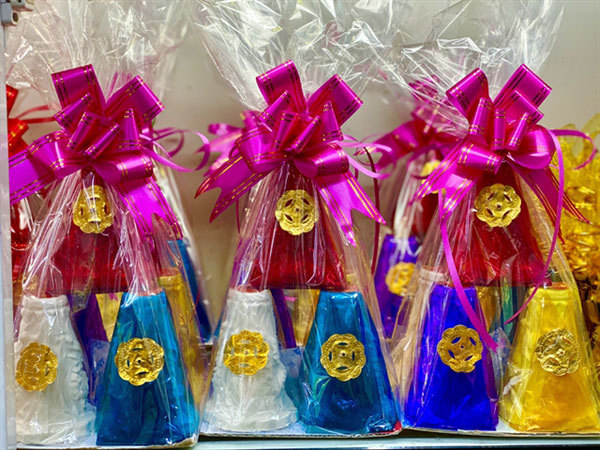 |
| Kicker: Oan cakes could not be lacked on the alters of Vietnamese, pagodas and tempers. — Photo kinhtedothi.vn |
The oan cake reflects the Vietnamese spirit, personality and soul that always places importance on dutifulness and loyalty, according to Dao Thi Loan, 80, a Hanoian artisan that has been making the cake for more than 60 years.
The cake is used to place on the altars of Vietnamese temples and pagodas and that of local households to worship their ancestors, said Loan.
Loan said ingredients to make the cake include roasted glutinous rice powder, refined white sugar, vanilla and grapefruit flower oil.
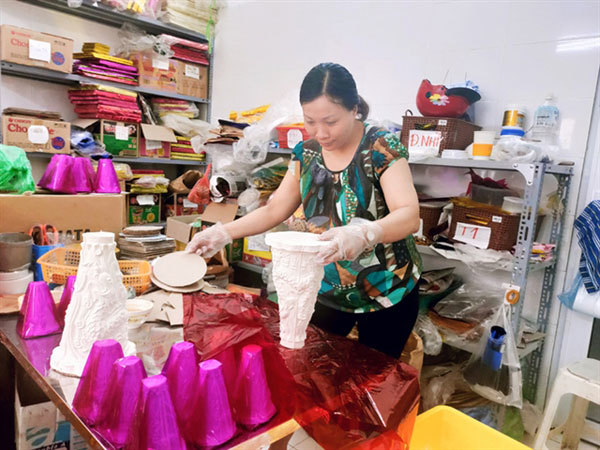 |
| Kicker: A maker wraps the oan cakes in cellophane papers. — Photo kinhtedothi.vn |
The first step is to cook the sugar with water until it becomes dense then stir well it with vanilla and grapefruit flower oil.
The process of cooking the sugar (locally known as hoán đường) is the most difficult step because there needs to be enough sugar to ensure its sticky, said Loan.
"We have our own secrets on mixing the right rate of wet sugar and the glutinous powder to ensure the cake is not too dry or too wet. We often base on the weather to adjust the right ingredients,” said Loan, adding that she uses different sized wooden frames, which forms are of tower shape with the top flat to cast the cake.
Each frame is carved with images of a dragon flying or a phoenix dancing which reflects the quintessence of the capital, Loan said.
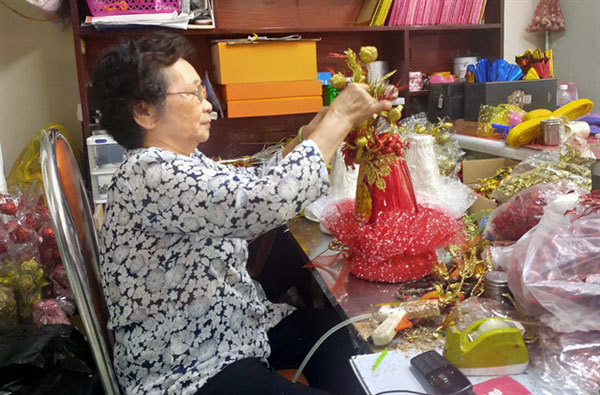 |
| Kicker: Oan artisan Dao Thi Loan is decorating her cakes. — Photo kintedothi.vn |
Care is needed when casting to ensure the cake is not broken, she said, adding that the last step is to wrap it in colourful cellophane papers (locally known as giay ngu sac) and stick a yellow stamp with the word Tho (long life or life span) on its top.
Loan said her Tinh Ngoc shop also makes big oan cakes which weigh up to 10kg and are decorated to supply pagodas and temples in the north.
A monk, at national-level ranking Quynh Pagoda in Hanoi’s Hai Ba Trung District, said a pure oan cake is important to offer to Buddha or God by disciples while worshipping at the pagoda.
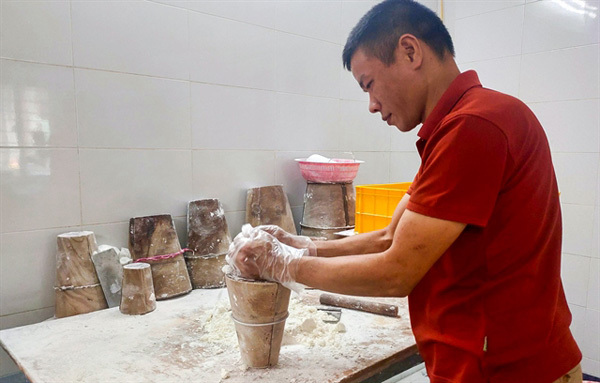 |
| Kicker: Casting oan cake needs carefully care to ensure it is not to be broken. — Photo afamily.vn |
The anonymous monk said the oan cake is one of four offerings that are must-haves for a worshipping ceremony because an incense stick represents rituals, flower reflects the beauty given by God, fruits represent special produce from localities and white oan cake is a symbol of the Earth.
Asked why oan cakes are available in the alters of pagodas and temples, the monk said it is made of traditional glutinous rice (locally known as nếp cái hoa vàng) which is said to be the best rice for its soft and fragrant flavours.
Nguyen Thi That, a Buddhist in the northern province of Thai Nguyen, said she often travels to Hanoi to buy oan cakes to offer to pagodas during big anniversaries such as Buddha’s birthday, Ram Thang Bay (the fifth day of the seven lunar month), Tet holiday and other ceremonies.
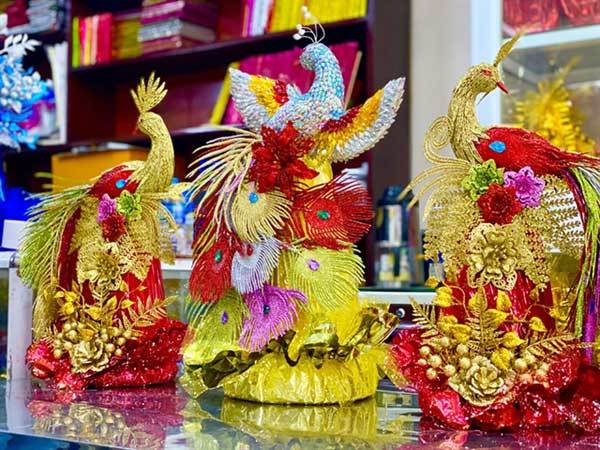 |
| Kicker: Many pagodas, temples and individual household are interested in artistic oan cakes. — Photo kinhtedothi.vn |
“I believe that the colourful oan cakes bring good luck such as being healthy, and wealthy all year round,” That told Việt Nam News.
Loan said apart from making traditional oan cakes her Tinh Ngoc shop also produces oản nghệ thuật (an artistic oan) in which her descendants have invested their time and soul to make it.
“We all try our best to preserve the job handed down by our ancestors but more importantly we would like to keep the Vietnamese spirit through our oan cake speciality,” Loan’s son said. VNS
Nguyen Thanh Ha

Go nuts for donuts in Da Lat
Banh tieu xoi (Vietnamese donut with sticky rice) is one of the superbly tasty dishes of Da Lat in the Central Highlands province of Lam Dong, according to Hanoian Le Hoa.
Five places in Hanoi you can order cream cheese garlic bread while social distancing
Is your favourite coffee shop closed? The restaurant you love to eat at shut right now? Don’t worry too much, we have option for you.